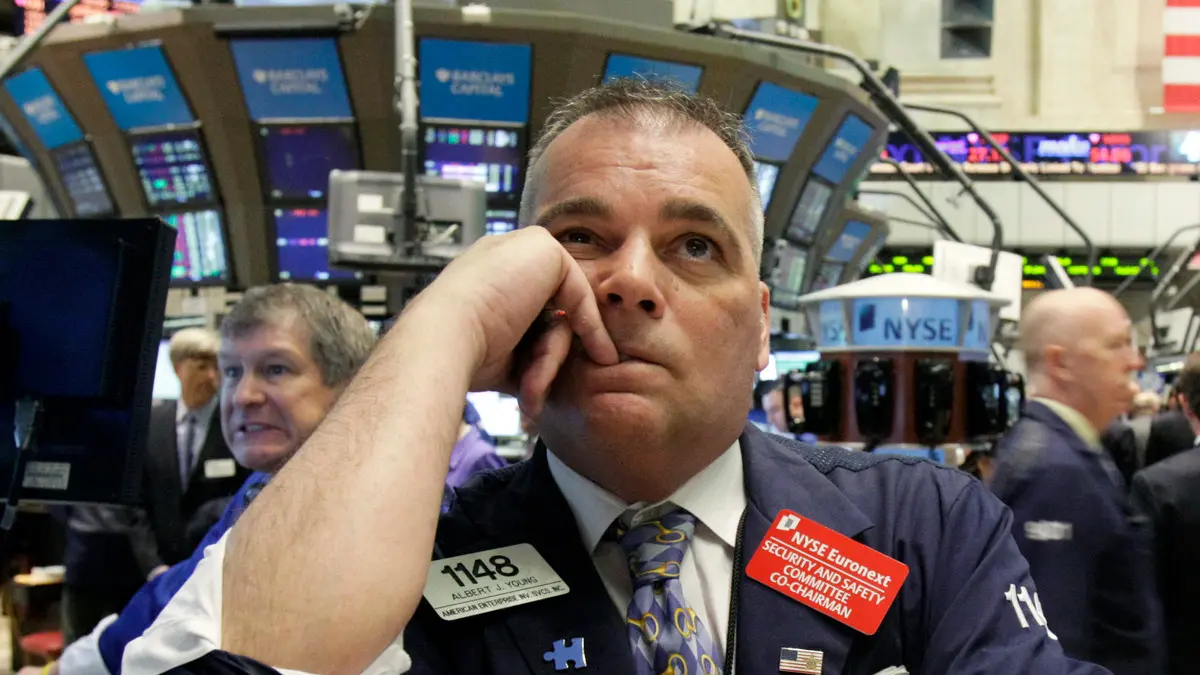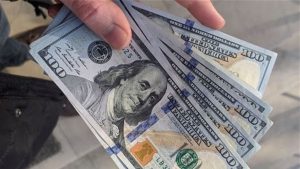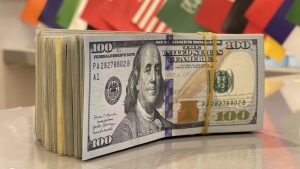U.S. stocks plummeted again on Monday after another negative trading week on Wall Street, amid a lack of progress in global trade talks.
The Dow Jones Industrial Average dropped by 1,173 points, or 3%, by 5:28 PM GMT. The S&P 500 fell by 3.14%, while the Nasdaq Composite lost 3.41%.
Tesla’s stock decreased by 7.3%, Nvidia’s dropped by 5.98%, AMD fell by 4%, Meta Platforms lost 3.54%, and Amazon’s stock declined by about 4%.
There was no news of progress in trade agreements over the weekend, which weakened investor confidence. On the contrary, tensions with China seemed to be rising, as Beijing warned other nations against entering agreements with the U.S. that would harm Chinese interests.
This market movement follows the third consecutive weekly decline for the major indices in the past four weeks. The S&P 500 lost 1.5% last week, while both the Dow and Nasdaq fell more than 2%.
Concerns over tariffs imposed by U.S. President Donald Trump have also negatively impacted Wall Street recently. Since April 2, the day Trump announced a set of tariffs on imports from other countries, major indices have dropped about 7%.
Over the weekend, Chicago Federal Reserve President Austan Goolsbee said in an interview with CBS that the tariffs could “significantly slow down U.S. economic activity” by summer. This followed comments from Federal Reserve Chairman Jerome Powell on Wednesday, expressing concerns that the president’s tariffs might hinder the Fed’s ability to control inflation and stimulate economic growth.
Doubts about the Federal Reserve’s independence have also hurt stock markets. Trump called for the Fed to cut interest rates on Thursday and hinted at the possibility of “firing” Powell. On Friday, White House economic advisor Kevin Hassett said that the president and his team were considering whether Powell could be removed from his position.
Adam Crisafulli of Vital Knowledge wrote, “Investors face a new macro concern: Trump’s threats to the Federal Reserve’s independence,” adding, “This threat ties into Trump’s trade war, where Powell and his colleagues are forced to stay on the sidelines due to the risk of higher inflation from tariffs in the coming months, despite recent market volatility and growing risks of a slowdown in growth.”
Crisafulli added, “The simultaneous decline in stocks, the U.S. dollar, and bond yields suggests that Trump’s trade war has sparked a wave of capital outflows from U.S. financial assets, a wave that no negotiations can stop.”
The U.S. dollar index fell by more than 1% to 98.13, which pushed gold prices to record highs. Futures for the precious metal rose by 2.4%, surpassing $3,400 per ounce.
Moneta Markets’ Chief Market Strategist, Fadi Riyad, said that global financial markets, especially the U.S. dollar index, are approaching levels that could witness notable shifts in performance in the coming period, amidst expectations about the outcomes of U.S. economic policies and the tensions between the current administration and the Federal Reserve.
In an interview with “Al Arabiya Business,” Riyad added that Q1 corporate earnings results, expected this week, are unlikely to bring any major or negative surprises that could sharply affect the market, despite the prevailing concerns.
He emphasized two main issues facing the U.S. dollar index: the first relates to the unclear direction of Trump’s economic policies, and the second pertains to the slow pace of new policies and their impact on the market, as pointed out by Federal Reserve Chairman Jerome Powell, who called for more time to assess the effects of those policies.
Riyad noted that the ongoing tension between Trump and the Federal Reserve is directly reflected in the dollar’s pricing in the markets, especially since some scenarios are being raised regarding Powell’s possible removal, which could lead to sharp fluctuations similar to those witnessed during the announcement of a previous trade truce two weeks ago.
He pointed out that the Federal Reserve is currently unwilling to intervene directly to support markets or send reassuring signals, despite growing pressure.
He stressed that Powell will not easily bow to Trump’s wishes, even at the cost of his position, and noted that any limited response from the Fed might be enough to create a temporary reversal in market performance.
He also warned of a scenario where the dollar is systematically weakened alongside tariff policies, suggesting that this could push the dollar index toward historically low levels, not seen since the rate cuts during the COVID-19 pandemic.



















